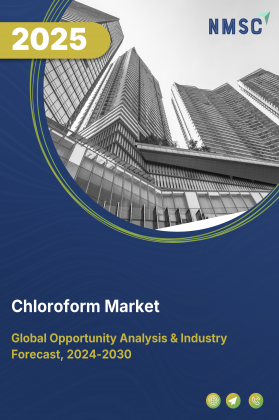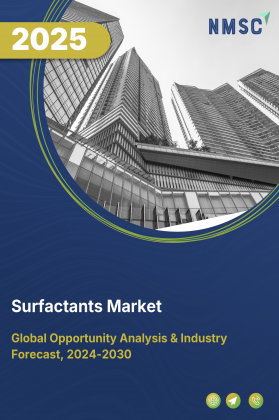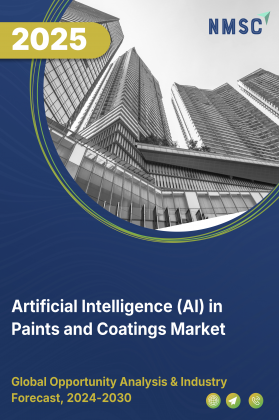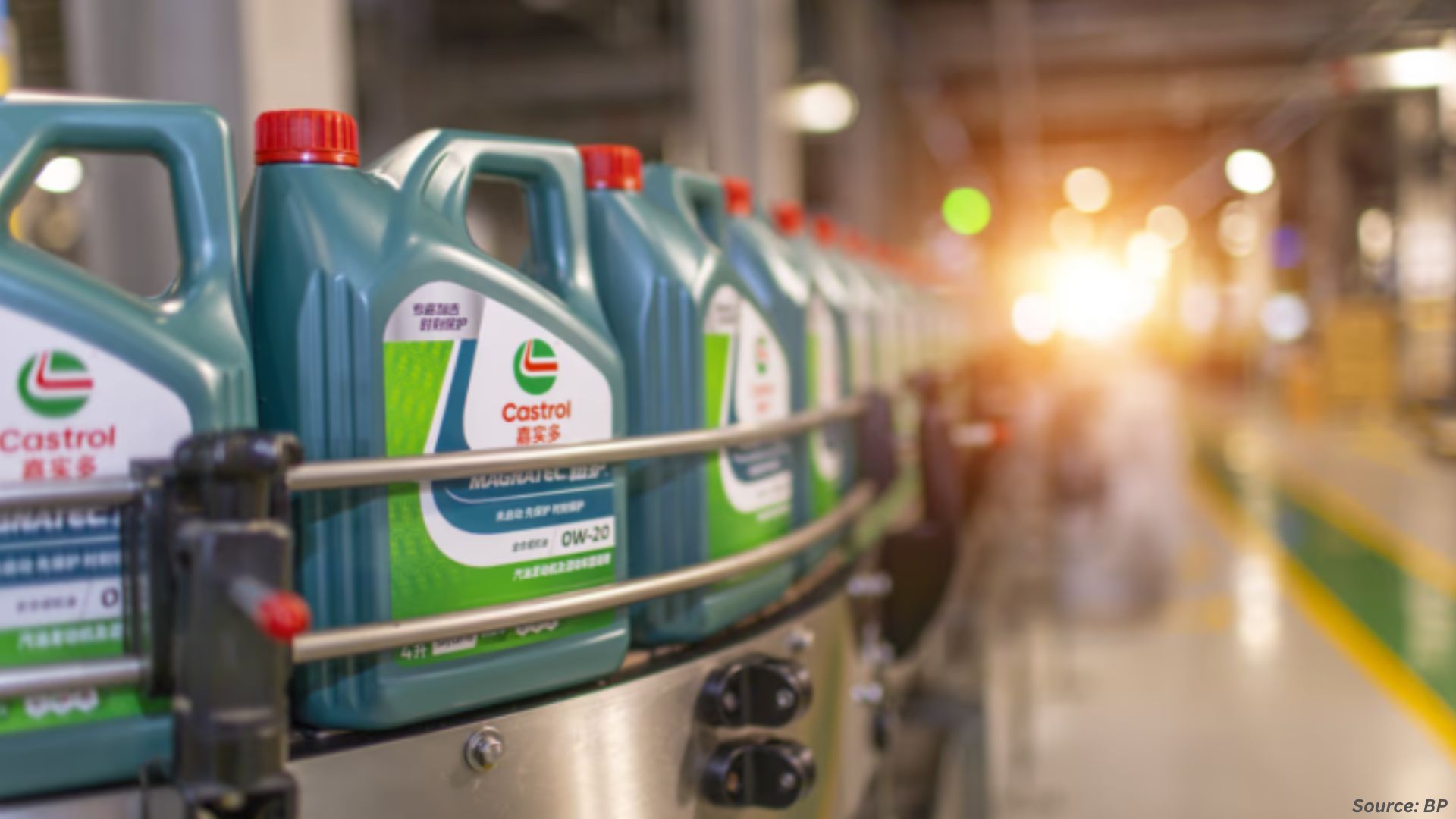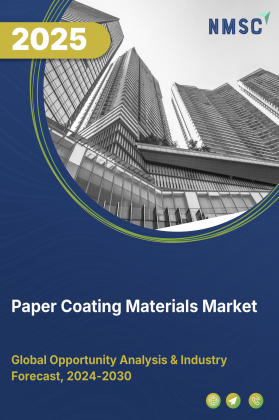
Paper Coating Materials Market by Material Type (Mineral, Pigments & Additives, Synthetic), by Product (Machine-finished Coated Papers, Standard Coated Fine Papers, Low Coat Weight Papers, Art Papers, Others), by Coating Type (Liquid Laminates, Film Laminates, Barrier & Specialty Coatings), and by End User (Packaging, Printing & Publishing, Stationery & Binding, Pharmaceuticals, Others) – Global Opportunity Analysis and Industry Forecast, 2025–2030
Industry Outlook
The global Paper Coating Materials Market size was valued at USD 3.64 billion in 2024, with an estimation of USD 3.83 billion in 2025 and is predicted to reach USD 4.93 billion by 2030 with a CAGR of 5.2% from 2025-2030. The industry remains highly promising, fueled by a confluence of retail growth, technological innovation, and sustainability imperatives.
Rising retail sales and e-commerce expansion are boosting demand for premium coated paper in packaging, labels, and promotional materials, where visual appeal and durability drive consumer engagement. At the same time, breakthroughs in coating formulations—such as nanocoatings, polymer-latex hybrids, and bio-based additives—are enhancing performance while reducing environmental impact.
With governments tightening regulations on petroleum-based chemicals and consumers prioritizing eco-friendly packaging, manufacturers are rapidly transitioning to recyclable, compostable, and water-based coatings. This convergence of market drivers positions paper coating materials as an essential enabler of both functional and sustainable packaging solutions, ensuring steady global growth through 2030.
Rising Demand for High-Quality Packaging & Print Drives the Market Growth
A major driver of the paper coating materials market growth is the surging need for premium-quality packaging and printing solutions. This demand is closely tied to the growth of the retail sector, where attractive, durable, and protective packaging plays a vital role in consumer engagement and brand recognition.
According to the U.S. Census Bureau, total retail sales for the second quarter of 2025 were estimated at USD 1,865.4 billion, marking a 0.4 percent increase from the first quarter of 2025. Such steady growth in retail activity directly fuels the requirement for high-quality coated paper used in packaging, labels, brochures, and promotional materials. Coatings enhance printability, gloss, and moisture resistance, ensuring that products stand out on shelves and in e-commerce platforms, thereby driving sustained demand in the market.
Technological Innovations in Coating Formulations & Techniques Fuels Market Demand
Technological innovations in coating formulations & techniques serve as a significant driver of the paper coating materials market demand, with advancements enabling enhanced performance, efficiency, and sustainability in coated paper applications. Modern innovations such as nanocoatings, polymer-latex hybrids, and bio-based additives are enhancing the functionality of coated paper by improving its barrier properties, durability, and print quality.
At the same time, new application techniques, including curtain coating, blade coating, and advanced digital-compatible coatings, are enabling more efficient production with reduced waste and improved uniformity. These innovations are particularly valuable for industries like food packaging, pharmaceuticals, and premium print media, where coated paper must deliver superior performance in terms of aesthetics, protection, and sustainability.
By offering coatings that are lighter, multifunctional, and eco-friendly, technological progress is expanding the application scope of paper coating materials and strengthening their adoption across global markets.
Sustainability & Shift to Eco-Friendly Coatings Boost Market Expansion
The growing emphasis on sustainability has become a major driver of the paper coating materials market expansion. Rising environmental concerns, coupled with stricter government regulations on the use of petroleum-based and VOC-emitting chemicals, are encouraging manufacturers to adopt eco-friendly, water-based, and bio-based coating materials. Alternatives derived from starch, cellulose, clay, and lignin are gaining traction as they provide biodegradability and recyclability while maintaining strength, printability, and protective properties. At the same time, consumer preference for sustainable packaging and greener printing solutions is pushing brands to integrate environmentally responsible coated papers into their supply chains. This shift toward eco-friendly coatings not only reduces the environmental footprint but also creates opportunities for innovation, making sustainability a critical growth driver for the market.
Volatility in Raw Material Prices Limits the Market Growth
One of the key restraints of the paper coating materials market is the high dependency on raw materials such as pigments, binders and additives. Fluctuations in the prices of these inputs, driven by global supply chain disruptions, energy costs, and geopolitical uncertainties, directly impact production costs and profit margins for manufacturers.
In particular, petroleum-derived binders like synthetic latex are vulnerable to crude oil price volatility, while shortages of minerals such as kaolin and titanium dioxide create supply bottlenecks. These uncertainties not only increase operational risks for producers but also limit the ability of end-users to secure stable pricing, thereby restraining the overall growth potential of the market.
Rising Adoption of Smart and Functional Coatings Creates New Growth Opportunities
A key opportunity for the market is the increasing adoption of smart and functional coatings that go beyond traditional printability and aesthetics. Innovations such as antimicrobial coatings, grease- and moisture-resistant layers, UV-protective finishes, and temperature-sensitive coatings are gaining traction in industries like food packaging, healthcare, and premium consumer goods.
These advanced coatings not only extend the shelf life of products and improve safety but also enhance consumer experience through added functionality. As demand grows for packaging and print materials that deliver both protection and interactivity, manufacturers of paper coating materials have significant scope to expand their product offerings and capture new high-value markets.
Market Segmentation and Scope of Study
The paper coating materials market report is divided on the basis of material type, product, coating type, end user, and region. On the basis of material type, the market is grouped into minerals; pigments & additives and synthetics. On the basis of product, the market is categorized into machine-finished coated papers, standard coated fine papers, low coat weight papers, art papers, and others. On the basis of coating type, the market is divided into liquid laminates which include varnish, aqueous coating, and UV coating; film laminates which include polypropylene coating and polyester coating, and barrier & specialty coatings. On the basis of end user, the market is grouped into packaging, printing & publishing, stationery & binding, pharmaceuticals, and other. Regional breakdown and analysis of each of the aforesaid segments includes regions comprising of Asia-Pacific, North America, Europe, and RoW.
Geographical Analysis
In North America, a key driver of the paper coating materials market share is the rapid expansion of e-commerce and retail activities, which demand high-quality packaging solutions that combine durability, product protection, and strong visual appeal. Coated paper is widely used in this sector for packaging, labelling, and branding, as it enhances print quality while ensuring goods are safely delivered to consumers.
According to the International Trade Administration (ITA), global B2C e-commerce revenue is projected to reach USD 5.5 trillion by 2027, growing at a steady CAGR of 14.4% from 2024. This surge in online retail activity directly boosts the demand for coated paper in North America, as companies increasingly rely on premium packaging to strengthen customer experience and brand recognition.
In Europe, one of the primary drivers of the paper coating materials market is the region’s strong focus on sustainability and environmentally friendly packaging. Strict regulations on single-use plastics and growing consumer awareness are pushing industries to adopt recyclable, biodegradable, and bio-based coated papers as alternatives.
Coated papers made with eco-friendly materials not only meet compliance requirements but also support brands in enhancing their green image. This strong sustainability push is creating significant demand for innovative coated paper packaging solutions across retail, food & beverage, and consumer goods industries in the region.
In Asia Pacific, the paper coating materials industry is strongly driven by the rapid growth of the food & beverage and consumer goods industries. Rising urbanization, higher disposable incomes, and shifting consumption patterns are fuelling demand for packaged foods, ready-to-eat meals, and premium consumer products, all of which require high-quality coated paper for enhanced protection, printability, and shelf appeal.
According to the India Brand Equity Foundation in 2025, the food processing sector is projected to reach USD 700 billion by 2030. This anticipated growth in food processing highlights the increasing need for reliable and sustainable packaging solutions, further boosting the adoption of paper coating materials across the Asia Pacific region.
In the Rest of the World (RoW), including regions such as Latin America, the Middle East, and Africa, a key driver of the paper coating materials market is the increasing demand for premium print and packaging solutions. Rapid urbanization, a rising middle-class population, and expanding retail and e-commerce activities are driving the need for coated paper that provides durability, high-quality printability, and enhanced visual appeal.
Industries such as food & beverage, cosmetics, and consumer goods are increasingly adopting coated paper for branding and product differentiation. Additionally, government initiatives promoting industrial growth and modernization in packaging practices are further supporting the paper coating materials market expansion in the rest of the World.
Strategic Innovations Adopted by Key Players
Key players in the paper coating materials industry are accelerating global expansion through upscale brand launches, service diversification, and strategic partnerships.
-
In May 2025, BASF SE, in collaboration with extrusion coating specialist Metpack, introduced Ezycompost paper and paperboard coated with BASF’s innovative biopolymer ecovio 70 PS14H6. Certified under TÜV OK Compost Home, the solution provides superior barrier properties for food packaging and withstand boiling temperatures, making it a viable alternative to conventional plastic coatings. This launch underscores BASF’s strategic push in the market, where demand is rising for sustainable, high-performance coatings that enable recyclability and compostability, strengthening its position in eco-friendly packaging solutions.
-
In October 2024, Eastman Chemical Company partnered with UPM Specialty Papers to launch a biopolymer-coated, compostable paper-based food packaging solution. The new film combines Eastman’s compostable Solus additives with BioPBS polymer, delivering grease and oxygen barrier performance on recyclable paper substrates. This innovation directly supports the growing shift in the market toward sustainable, functional coatings that balance food safety, durability, and environmental compliance, positioning Eastman as a key driver of eco-friendly packaging solutions.
Key Benefits
-
The report provides quantitative analysis and estimations of the industry from 2025 to 2030, that assists in identifying the prevailing paper coating materials market opportunities.
-
The study comprises a deep-dive analysis of the current and future paper coating materials market trends to depict prevalent investment pockets in the sector.
-
Information related to key drivers, restraints, and opportunities and their impact on the market is provided in the report.
-
Competitive analysis of the players, along with their market share is provided in the report.
-
SWOT analysis and Porters Five Forces model is elaborated in the study.
-
Value chain analysis in the market study provides a clear picture of roles of stakeholders
Paper Coating Materials Market Key Segments
By Material Type
-
Mineral
-
Ground Calcium Carbonate
-
Precipitated Calcium Carbonate
-
Kaolin Clay
-
Talc
-
Bentonite
-
Others
-
-
Pigments & Additives
-
Titanium Dioxide
-
Starch
-
-
Synthetic
-
Styrene-Butadiene Latex
-
Wax
-
Others
-
By Product
-
Machine-finished Coated Papers
-
Standard Coated Fine Papers
-
Low Coat Weight Papers
-
Art Papers
-
Others
By Coating Type
-
Liquid Laminates
-
Varnish
-
Aqueous Coating
-
UV Coating
-
-
Film Laminates
-
Polypropylene Coating
-
Polyester Coating
-
-
Barrier & Specialty Coatings
By End User
-
Packaging
-
Food & Beverage
-
Corrugated Boxes
-
General Packaging
-
Others
-
-
Printing & Publishing
-
Machine-finished coated papers
-
Standard Coated Fine Papers
-
Low-Coat Weight Papers
-
Art Paper
-
Others
-
-
Stationery & Binding
-
Pharmaceuticals
-
Others
By Region
-
North America
-
The U.S
-
Canada
-
Mexico
-
-
Europe
-
The UK
-
Germany
-
France
-
Italy
-
Spain
-
Denmark
-
Netherlands
-
Finland
-
Sweden
-
Norway
-
Russia
-
Rest of Europe
-
-
Asia-Pacific
-
China
-
Japan
-
India
-
South Korea
-
Australia
-
Indonesia
-
Singapore
-
Taiwan
-
Thailand
-
Rest of Asia-Pacific
-
-
Rest of the World
-
Latin America
-
Middle East
-
Africa
-
Key Players
-
BASF SE
-
Omya AG
-
Eastman Chemical Company
-
Michelman Inc.
-
DuPont de Nemours, Inc.
-
Archroma
-
Trinseo S.A.
-
Celanese Corporation
-
Hansol Chemical Co., Ltd.
-
EcoSynthetix Inc.
-
Ingredion Incorporated
-
Thiele Kaolin Company
-
Solenis LLC
Report Scope and Segmentation:
|
Parameters |
Details |
|
Market Size in 2025 |
USD 3.83 Billion |
|
Revenue Forecast in 2030 |
USD 4.93 Billion |
|
Growth Rate |
CAGR of 5.2% from 2025 to 2030 |
|
Analysis Period |
2024–2030 |
|
Base Year Considered |
2024 |
|
Forecast Period |
2025–2030 |
|
Market Size Estimation |
Billion (USD) |
|
Growth Factors |
|
|
Countries Covered |
28 |
|
Companies Profiled |
15 |
|
Market Share |
Available for 10 companies |
|
Customization Scope |
Free customization (equivalent to up to 80 working hours of analysts) after purchase. Addition or alteration to country, regional, and segment scope. |
|
Pricing and Purchase Options |
Avail customized purchase options to meet your exact research needs. |

















 Speak to Our Analyst
Speak to Our Analyst



